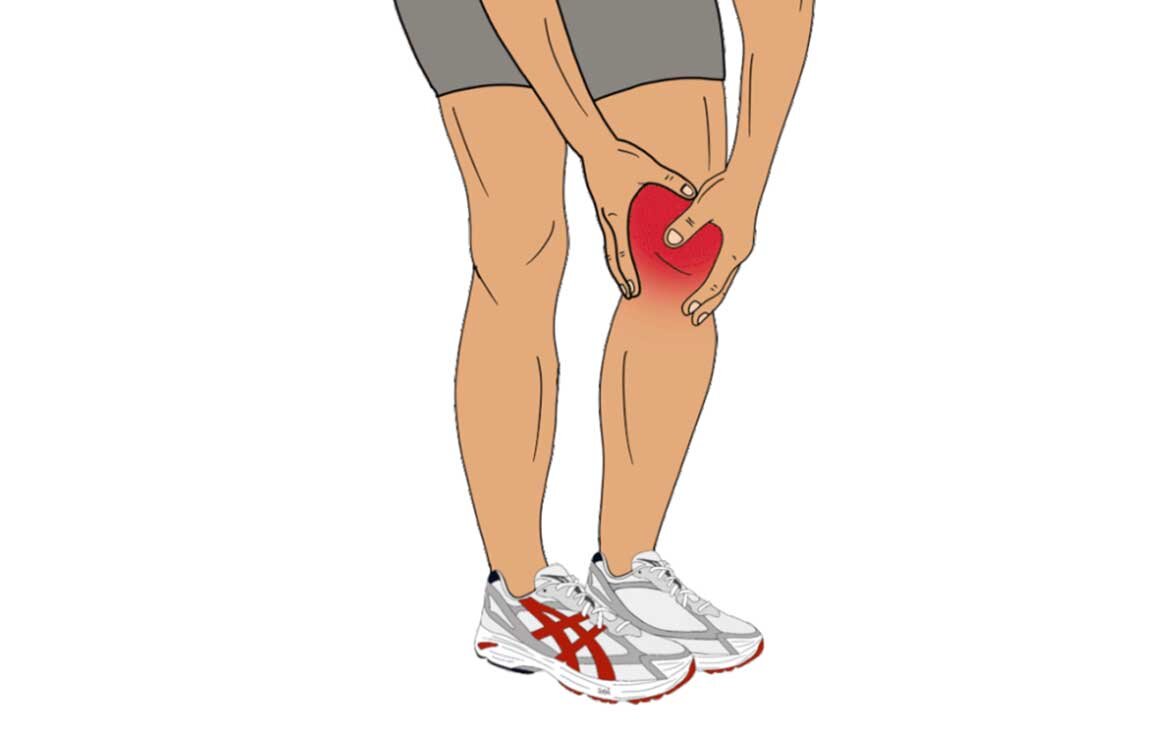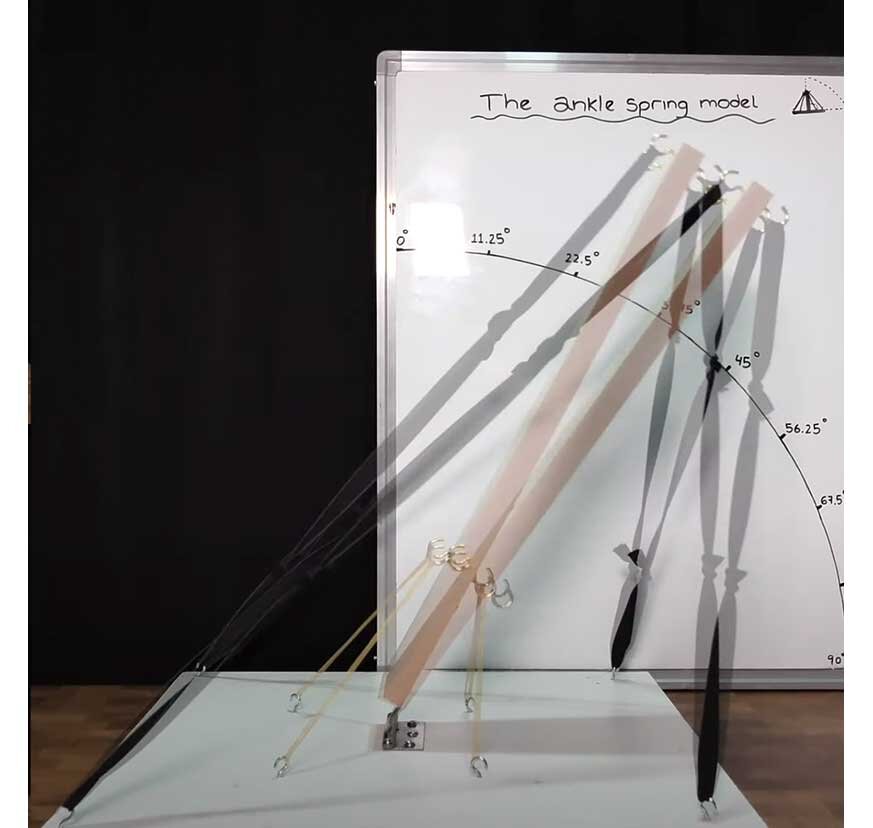Prevent Running Injuries by Barefoot Running & Forefoot Striking
Written by Christopher Ioannou, BSc (Hons) Sports & Exercise Science
Reading Time: 10 minutes
The video version of this post:
Running Injury Rates
The rate of running-related injuries has been on the rise since the 1970s. It is now estimated that up to 79% of recreational runners will end up with an injury after one year of running [1][2][3].
These statistics are not good, considering that running is pretty much built into our DNA. If these rates of running-related injuries had occurred among other animals, like lions for example, well, we would only have known that they ever existed through fossil records.
Therefore, the fact that we still exist implies that our hunter-gatherer ancestors were not plagued by the number of running-related injuries that we see today.
So, what has gone wrong and how did we get to this point?
Risk Factors for Running Related Injuries
Figure 1 - Running injuries spiked significantly when training volume exceeds 64km per week
Well, the scientific literature points to what is known as risk factors.
The authors of a popular literature review found that there was a significant rise in injury rates when training volume exceeded 64km of running per week [3].
A recent study on Ethiopian long- distances runners had similar results: injury rates spiked significantly among athletes who ran more than 50km per week [4].
Running on uneven surfaces, such as in trail running, seems to be another serious risk factor for injury [4].
A meta-analysis of 17 related studies found that previous injury was also a strong risk factor for future injury [3].
The Root Cause of Running Injuries
Figure 2 - Thick padded shoes promote a heel-striking movement pattern
Risk factors for injury don't tell us the whole story. To find the root cause of the problem, we need to be asking ourselves why something is considered a risk factor.
For example, why is it that running more than 50km per week drastically increases one’s risk of injury? And why do previous injuries often recur?
There are also many athletes who run ultra-marathons, train in high volumes and do so on varying surfaces without getting injured. Why can they do it, while the majority can't?
Are these individuals just anomalies, genetically superior, OR... have these individuals just found ways to reduce their risk of injury?
Why Dean Karanazes Forefoot Strikes
One such athlete is Dean Karnazes: an American-born Greek, who is famous for running 560km in 80 hours and 44 minutes in 2005 – without sleep! A year later, he ran a marathon in each of America's 50 states in 50 consecutive days.
So, how does a man like Dean – who accomplishes these extreme physical feats and is known to run about 50km a day in training – not get injured?
Well, he actually answered this question in a seminar he did a few years ago at Google. This is what he said.
What Dean explains is that running in thick padded shoes promotes a heel-striking movement pattern. This change in running style is probably due to the fact that the cushioned shoes block a lot of the feeling we have with the ground upon impact.
It makes sense, because, as a test, if you take your shoes off, then jump and land on your heels, you'll get such a sharp jolt up your body that you'll make sure you never land on your heels again.
So, to reiterate, barefoot runners, who predominantly forefoot strike are able to utilise their Achilleas tendons and calf muscles more efficiently while running. These connective tissues and musculature help prevent injury and enhance athletic performance.
Why Ross Edgley Forefoot Strikes in Barefoot Shoes
Ross Edgley, the man who famously swam around Great Britain, is in agreement with the statements made by Dean Karnazes. Check what he had to say in his video on how he was able to run 30 marathons in 30 days.
Again, this is a man who should be riddled with injuries due to the volume of physical training he puts his body through every day.
But obviously these guys have figured out that minimalistic shoes combined with a forefoot striking running pattern can help them prevent running related injuries... and the cool thing is that they are sharing this wisdom with us!
Again, this is a man who should be riddled with injuries due to the volume of physical training he puts his body through every day.
But obviously these guys have figured out that minimalistic shoes combined with a forefoot striking running pattern can help them prevent running related injuries... and the cool thing is that they are sharing this wisdom with us!
Why Modern Running Shoes are Bad for our Feet
Despite the testimonials from these elite athletes, I would still like some type of scientific validation for what they are saying. I mean, can modern footwear really be causing such havoc on our bodies and the way we run?
I thought they are supposed to help us prevent injury by fixing the way we run.
Well, let's see what the science has to say about this:
This information makes total sense to me. I mean, if excessive pronation or collapsed arches, commonly looked upon as flat feet, is such a problem then surely we can't just solve the issue by wearing a pair of fancy shoes.
Well, let’s break it down to see why modern footwear has missed the boat:
So, too much support is obviously not optimal, especially when we have innate structures that are very capable of supporting themselves if given a chance.
This is where our sensory feedback becomes so important, as briefly mentioned in the animation.
Our Sensory Feedback Mechanism
Figure 3 - Sensory feedback on hands and feet
Basically, we rely heavily on our sense of touch to stimulate, through electrical impulses, our muscles to contract and adjust themselves to our ever-changing environment.
This concept can best be explained with our hands. A surgeon, for example, relies on his sense of touch to perform high-precision surgery.
Now, you wouldn’t see a surgeon wearing oven mitts while performing an operation, right?
No, thick gloves would dull the sensation in his fingers and restrict the motion of his hands, and consequently the ability to react quickly and be precise during the procedures.
Instead, surgeons use ultra-thin and flexible latex gloves to protect their patients from infection while still preserving their sense of touch and fine motor skills.
This concept can also be applied to the feet, where we also have a dense network of nerve endings, just like in the hands.
Barriers like thick-soled shoes placed between our feet and the ground can also hamper our sense of feeling of the environment.
The potential result of such a restriction is severely altered balance and motor patterns, which changes the efficiency with which we move – and increases our risk of injury [5].
Good Sensory Feedback Improves Stability in a Runner
Figure 4 - Spring model used in our experiment
To understand this concept further, let's take a look at the spring models we built from the design presented by the University of Calgary to represent the muscles that attach around the ankle in a paper titled: “Barefoot Running – Some Critical Considerations” [6].
The barefoot model has four long elastic bands, which represent the bigger muscles from the leg that attach around the ankle and which behave as the primary movers, capable of producing large amounts of force over a wide range of motion (Figure 4).
The shorter bands represent the smaller muscles coming from the foot, which make fast and precise micro-adjustments in response to the ever changing environment, making them excellent stabilisers.
As can be seen in the model, the stability potential of the smaller bands is due to their placement, line of action and size, which help them to react faster than the big bands [6].
Okay, so now what happens when we stick stiff, thick soled shoes on?
Well, as mentioned earlier, the foot is restricted due to a loss of sensation and fine motor control of the smaller muscles. It's the same as removing the little rubber bands in our ankle model.
Stability Experiment
Figure 5 - Pulling back the upright of the spring model
So, as an experiment, we compared the overall stability and reaction time of these two models, when the upright, representing the shin bone, was agitated.
To do this, we set up a camera on a fixed tripod, shooting at the model for high-speed 60fps capture.
A white board with angular measurements was fixed on the backdrop as a reference to compare the range of motion between the upright of the two models.
Then, one at a time, the uprights were pulled back to end range and released.
Figure 6 - Results of the spring model experiment
Results: The first model, which included both the small and large bands, moved past its resting position, set at 0, by around 29 degrees and it took 41 frames to find stability.
When we removed the small bands and repeated the test, the upright moved past its resting position by around 37 degrees and took 46 frames to find stability.
That’s a 28% increase in range of motion (ROM) and a 12% increase in Time To Stability (TTS) when the small bands were removed.
So what does this experiment show us?
Conclusion: Well, it shows that we rely on our smaller muscles to keep us stable and prevent excessive movement at end ranges of motion.
This can be especially helpful during loading tasks, such as on impact during running, to prevent injury.
Furthermore, when those small muscles are active, not only do they react quickly, so that we can easily navigate the surface we are moving on, but they also remove excess stress from the big muscles, which would otherwise have to do both the moving and the stabilising.
The Cause of Hamstring Pulls in Runners
Figure 7 - Hamstring pulls are common in running related injuries
Based off of this experiment, it’s no wonder that hamstring and calf pulls, as well as shin splints, are so common. These issues can be a sign that the bigger muscles are overloaded with work they shouldn’t be doing.
It’s, then, no surprise that studies have shown that balance is improved when barefoot compared to wearing shoes, because the small muscles are unrestricted and are thus able to do their job [5].
How to Prevent Running Related Injuries
So, in conclusion: If you want to improve your balance and athletic ability, and reduce your risk of injury, then it might be time to liberate your feet from the confinement of modern footwear completely and run barefoot. Or, at the very least, utilise barefoot shoes, which are designed to mimic barefoot motion.
I have been wearing barefoot shoes for a few years now, and they really have made a drastic improvement in the way I move and consequently the way my body has developed from exercise.
Currently I am wearing the Vivobarefoot Primus Lites for Road running and the Primus Trail FG for my trail running. You can find these on the Vivobarefoot website. Use discount code ‘EHEALTH12’ on checkout for 12% off any of your purchases.
You can also find our full review of these shoes here:
For more Health Science Made Simple, consider subscribing to our Youtube Channel and Subscribing to our newsletter.
Until next time, keep on exercising your health, Cheers!









